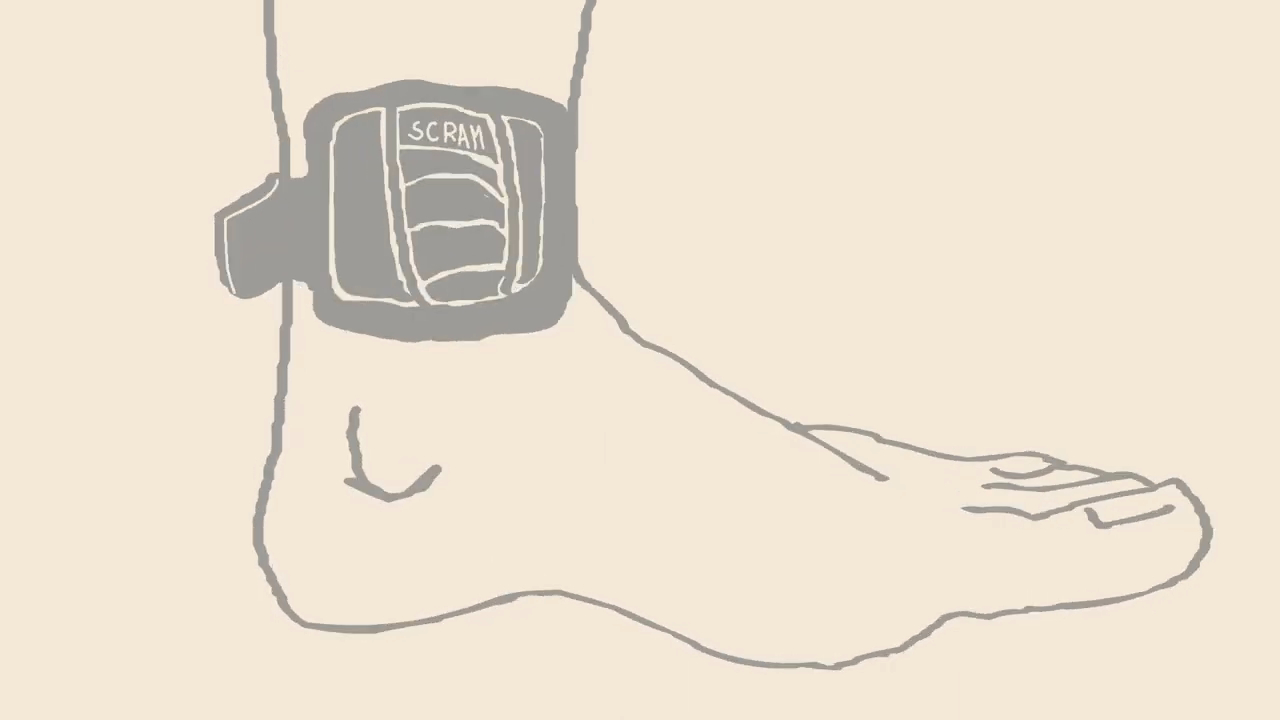SCRAM, which stands for Secure Continuous Remote Alcohol Monitoring, is a court-ordered device designed to track alcohol use in offenders.
Courts often assign these bracelets in cases involving repeat DUI or DWI offenders, individuals on probation, or defendants granted pretrial release.
By keeping constant surveillance over alcohol consumption, courts hope to reduce recidivism and protect public safety.
When Do Courts Require SCRAM Bracelets?
Courts turn to SCRAM bracelets as a tool to control alcohol consumption in individuals charged with or convicted of alcohol-related crimes.
Judges use them in a range of situations, often when public safety is at risk or when offenders have a history of repeated violations.
Pretrial Release
Defendants awaiting trial sometimes remain in jail due to concerns about their behavior outside custody.
Judges may instead allow release with conditions, one of which can be wearing a SCRAM bracelet. In high-risk DUI cases or cases involving multiple prior convictions, the device acts as reassurance for the court.
It provides continuous monitoring and reduces the risk of the defendant committing new alcohol-related offenses.
- Multiple DUI arrests or convictions in a short timeframe
- Evidence of ongoing alcohol abuse while awaiting trial
- Public safety concerns connected to the defendant’s drinking history
- Demonstrating responsibility as part of a conditional release agreement
Probation Conditions

Probation serves as an alternative to incarceration, but it comes with rules meant to keep offenders accountable.
Alcohol monitoring through SCRAM is often one of those rules for individuals convicted of DUI offenses. The bracelet provides constant oversight, making it difficult for probationers to hide drinking habits.
- Repeat offenders who have failed traditional probation conditions
- High blood alcohol concentration levels recorded at arrest
- Cases involving alcohol-related accidents or injuries
- Offenders with a proven history of alcohol dependence
A probationer who follows the rules and remains sober demonstrates rehabilitation. Violations recorded through the bracelet, however, can result in probation revocation and return to jail.
Post-Conviction Requirements
Courts sometimes make SCRAM bracelets part of a formal sentence after a conviction. Specialty DUI courts often emphasize treatment and monitoring over lengthy jail terms.
In such settings, SCRAM provides structure and accountability, helping offenders rebuild their lives while protecting the community.
- Offenders in DUI treatment programs overseen by the court
- Sentences combining supervision with rehabilitation
- Cases where alcohol use is tied to broader criminal activity
- Parole conditions designed to ensure successful reentry into society
By mandating SCRAM, judges aim to reduce recidivism while supporting long-term recovery.
Bail Conditions

Securing bail allows a defendant to avoid pretrial detention, but courts may impose conditions to minimize risks.
SCRAM bracelets are often included in these conditions for alcohol-related cases. A defendant released on bail with a bracelet is less likely to relapse into dangerous drinking behaviors.
- A defendant facing trial for vehicular manslaughter caused by alcohol
- Someone arrested for multiple DUI charges while awaiting trial for earlier offenses
- Situations where families of victims demand additional safeguards during bail
Severity and Frequency Criteria
Courts weigh the seriousness of the crime and the offender’s track record before requiring a SCRAM bracelet.
Judges often reserve the device for individuals deemed most likely to reoffend or put others at risk.
- Multiple DUI convictions across several years
- Alcohol-related crimes causing injuries or fatalities
- History of non-compliance with probation or bail conditions
- Assessment of the defendant as a danger to public safety
- Concerns that the defendant might attempt to flee rather than face trial
SCRAM serves as both a deterrent and a tool to ensure transparency during the judicial process.
How Do SCRAM Bracelets Work?
SCRAM technology is designed to provide courts with accurate, real-time data on alcohol consumption.
The system is complex yet efficient, and its value lies in its ability to monitor around the clock without interruption.
Several mechanisms allow the bracelet to deliver consistent results that courts can use to enforce sobriety orders.
Detection Mechanism
SCRAM bracelets operate by measuring transdermal alcohol concentration, or TAC. Alcohol exits the body through the skin in small amounts, usually about 1% of the total consumed. The bracelet is equipped with sensors capable of detecting these trace levels.
Because readings are continuous, even small drinking events are recorded.
Data Collection and Transmission
Monitoring works only if data reaches those responsible for oversight. SCRAM bracelets collect readings at intervals of roughly 30 minutes to one hour.
That information is then transmitted either automatically using a built-in modem or uploaded manually during scheduled appointments. Once received, monitoring centers analyze the data to identify drinking patterns.
- Device measures alcohol leaving the skin
- Readings taken at consistent intervals
- Data sent electronically or via manual download
- Analysts review patterns to confirm actual drinking events
@michellebellexo I know about blow and gos but an Alcohol monitoring bracelet?? 😳 #scram #scrambracelet #alcoholic #rehab #bartenderstories ♬ original sound – Michelle Raleigh Bartender
Conversion to BAC
TAC results are not identical to breathalyzer readings, so analysts use established formulas to estimate Blood Alcohol Concentration (BAC).
Courts and probation officers rely on these calculations to determine if a violation has occurred. While not perfect, the system is considered reliable for monitoring long-term alcohol use.
Cost and Responsibility
SCRAM programs place most of the financial responsibility on offenders. Courts often require individuals to pay both installation and monitoring fees as part of their conditions for release or sentencing. These costs can be significant, particularly for those already struggling financially.
- Installation fee ranging between $50 and $100
- Daily monitoring fee of $10 to $15
- Monthly expenses exceeding $300 in many cases
Some jurisdictions offer partial assistance, but support is inconsistent. Payment structures vary by location, and providers sometimes require offenders to arrange upfront deposits before the bracelet is fitted.
Accuracy and Limitations
SCRAM technology offers reliable monitoring, but like any system, it has limits.
ourts acknowledge the strengths of the device while also recognizing the potential for false positives or technical failures.
@brucedenson Top 3 Ankle Monitor Myths. #scram #anklemonitor #chikenskin ♬ original sound – Bruce Denson 😎
Reliability
SCRAM bracelets are built with anti-tampering features and redundant checks to confirm accurate results.
Multiple data points help ensure that random environmental factors are filtered out before reports are generated.
False Positives
Even with advanced safeguards, false positives occasionally occur.
- Contact with alcohol-based cleaning products or personal care items
- Medical conditions that alter skin readings, such as excessive sweating
- Poor device calibration or technical malfunctions
Such errors may result in disputes between offenders and the courts overseeing their monitoring.
Defense Options
Legal defenses are available for individuals contesting SCRAM reports.
Attorneys may bring expert witnesses to explain errors, present environmental evidence that explains exposure, or challenge calibration records.
These strategies allow courts to evaluate whether data truly reflects alcohol consumption or if alternative explanations hold more weight.
Summary
SCRAM bracelets function as valuable tools for courts aiming to reduce repeat alcohol offenses.
Judges apply them in pretrial, probation, bail, and sentencing contexts to maintain sobriety and protect public safety. While they are effective at detecting alcohol use, they are not flawless.
Legal defenses remain available for individuals who believe a SCRAM report is inaccurate, making the system both preventive and open to challenge.

